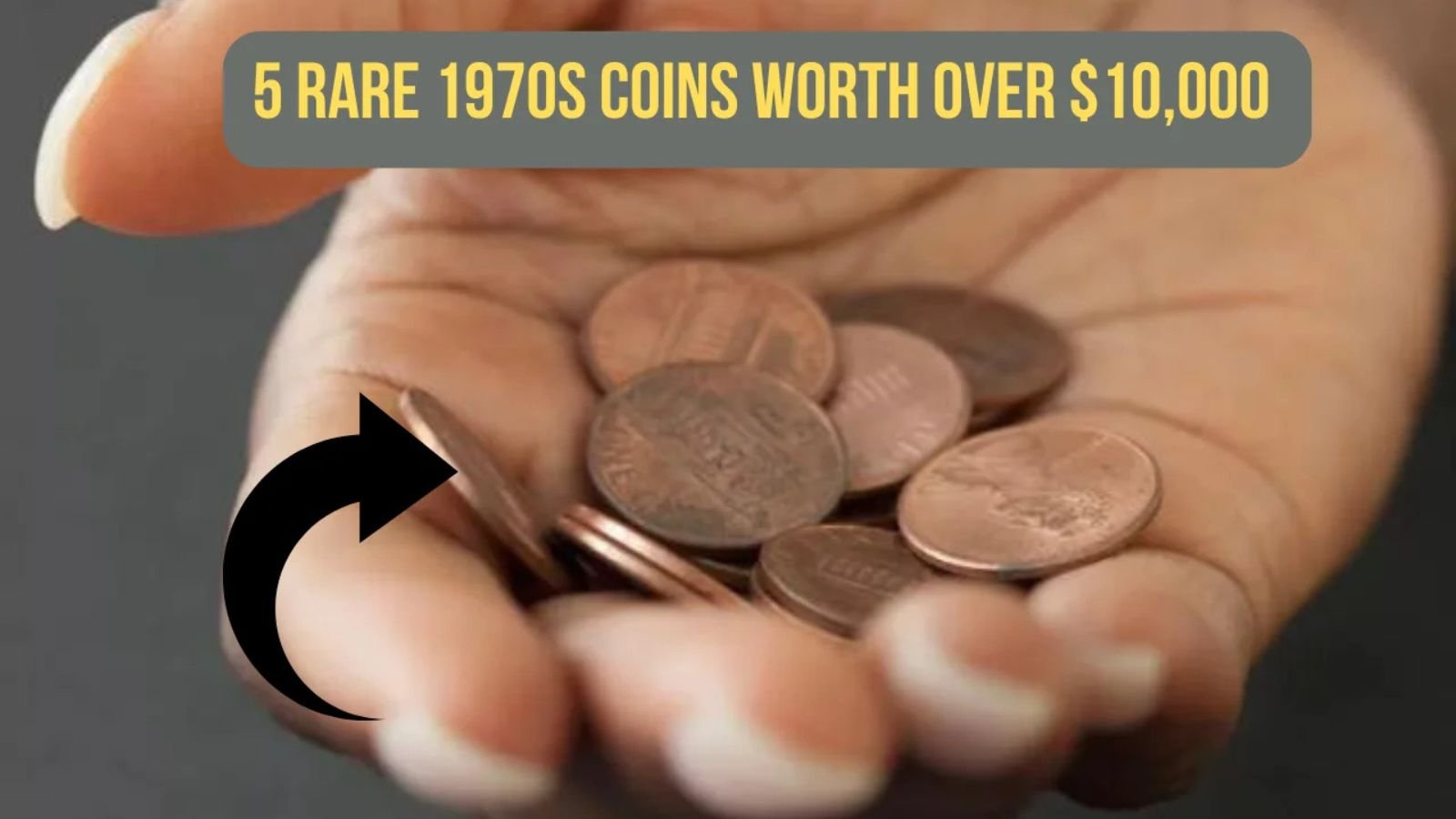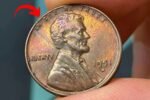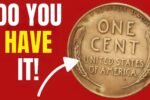Do you still have an old coffee can, piggy bank, or drawer filled with pocket change from decades ago? If any of those coins happen to be from the 1970s, you might be sitting on a small fortune without even realizing it. Some rare 1970s coins have skyrocketed in value due to minting errors, limited production runs, or unique historical significance. While most coins from the decade are only worth face value, a select few have fetched thousands—even hundreds of thousands—of dollars at auction.
This guide will explore five of the most valuable rare 1970s coins collectors seek today, what makes them so special, and how you can tell if you’ve got one in your possession.
The Lincoln Wheat Penny Valued at $1.5 Million, Still in Circulation
Why Are Some 1970s Coins Worth So Much?
The 1970s was a unique time for coin production in the U.S. The U.S. Mint transitioned through several design updates, experimented with metal compositions, and commemorated key historical events like the Bicentennial. With all that activity, it’s not surprising that a few errors and anomalies slipped through the cracks.
These mistakes—and their rarity—have made certain rare 1970s coins highly valuable to collectors. In fact, some coins that originally cost only a penny or a dime are now worth thousands, even tens of thousands of dollars.
So how do you know if you’re holding onto a piece of hidden treasure? Let’s dive into the top five rare 1970s coins that could make you rich.
1. 1970-S Small Date Lincoln Cent – Doubled Die Obverse
Estimated Value: Up to $18,000
At first glance, the 1970-S Small Date penny might look like any other Lincoln cent. But don’t be fooled—this coin is one of the most coveted rare 1970s coins in the world of numismatics. The secret lies in its subtle design features and striking error.
This variety is known for a doubled die obverse—a minting error where the die used to strike the coin is engraved twice, slightly misaligned. This results in noticeable doubling on the words “LIBERTY” and “IN GOD WE TRUST.” Collectors especially value the “Small Date” version, where the “7” in the year is aligned with the “0,” rather than raised higher.
How to Spot It:
-
Examine “LIBERTY” and “IN GOD WE TRUST” with a magnifier—clear doubling should be visible.
-
Confirm it’s the Small Date variety by checking the alignment of the “7.”
2. 1972 Lincoln Cent – Doubled Die Obverse
Estimated Value: $300 to $14,000+
Another treasure hiding in plain sight, the 1972 Doubled Die Lincoln cent is one of the most popular error coins from the decade. It’s a favorite among collectors because the doubling is so prominent it can be seen without a magnifying glass.
There are several varieties of this error, but the most valuable is known as Type 1, where the doubling on the date and letters is the strongest and most visually striking. This coin proves that not all rare 1970s coins require years of experience to identify—sometimes your own eyes are all you need.
How to Spot It:
-
Look for strong doubling in “LIBERTY,” “IN GOD WE TRUST,” and the date 1972.
-
Be cautious—many counterfeit versions exist. Get yours authenticated if in doubt.
3. 1976 Bicentennial Quarter – No Mint Mark or Silver Clad Version
Estimated Value: Up to $12,000
In honor of America’s 200th birthday, the U.S. Mint released the 1976 Bicentennial quarter, featuring a special reverse design with a drummer boy. Millions were made, so most are only worth face value. But among them, there are exceptions that have turned into rare 1970s coins.
Some Bicentennial quarters were mistakenly minted without a mint mark, or on silver planchets intended only for special proof sets. These coins—especially in mint or near-mint condition—are incredibly valuable.
How to Spot It:
-
Look for quarters without a mint mark under the date.
-
An “S” mint mark often signals a silver proof coin.
-
Silver versions are heavier and have a distinct ring when dropped gently.
4. 1971 Eisenhower Dollar – Silver Proof Error
Estimated Value: Up to $10,500
The Eisenhower dollar, minted from 1971 to 1978, is typically made of a copper-nickel composition. However, a few 1971-S proof coins were mistakenly struck on 40% silver planchets, making them extremely rare.
These coins were meant only for collectors, but mistakes at the San Francisco Mint allowed a small number to enter circulation. For collectors of rare 1970s coins, finding a silver 1971 Eisenhower dollar is like winning the lottery.
How to Spot It:
-
A silver Eisenhower dollar will weigh around 24.6 grams vs. 22.7 grams for standard copper-nickel coins.
-
Check the edge—silver coins lack the distinct orange-colored copper stripe.
-
Silver coins also have a brighter, smoother finish.
5. 1975 No-S Roosevelt Dime
Estimated Value: $350,000+
Among all rare 1970s coins, the 1975 No-S Roosevelt Dime is the crown jewel. It’s not just rare—it’s astonishingly rare, with fewer than 12 known to exist. These dimes were intended as part of proof sets from the San Francisco Mint, which typically bear an “S” mint mark. Somehow, a few made it out of the Mint without any mark at all.
Because they were intended only for collectors and not for circulation, these dimes in pristine proof condition are worth hundreds of thousands of dollars. In fact, one example sold for more than $350,000 at auction.
How to Spot It:
-
The dime will have no mint mark next to the year “1975.”
-
It should also appear in proof-like quality, with a mirror-like finish and frosted details.
Final Tips for Finding Rare 1970s Coins
If you’re now eyeing your old jar of change, here are a few quick tips to help you on your treasure hunt for rare 1970s coins:
-
Use a magnifying glass or jeweler’s loupe to check for errors like doubling or missing mint marks.
-
Weigh your coins if you’re checking for silver content. A good digital scale can make all the difference.
-
Compare with verified images from reputable coin guides or the PCGS website to confirm possible finds.
-
Don’t clean your coins—it may reduce their value. Let a professional appraiser or grading service assess their condition as-is.
-
Store coins safely in holders, flips, or albums to avoid damage or corrosion.
FAQs About Rare 1970s Coins
Q: How can I tell if I have one of these rare 1970s coins?
A: Start by looking for doubling in letters or missing mint marks. Use a magnifying glass or microscope to catch subtle details. Silver planchet errors can often be identified by their weight and shine.
Q: Are all coins from the 1970s valuable?
A: Not at all. The majority of coins minted in the 1970s are common and worth only face value. Only specific varieties with errors or rare mintings hold high value.
Q: Where can I get my coin appraised or graded?
A: Two of the most trusted services are the Professional Coin Grading Service (PCGS) and the Numismatic Guaranty Company (NGC). They can authenticate and accurately value your coin.
Q: Should I clean my rare coin before selling it?
A: Absolutely not. Cleaning a coin—even gently—can drastically reduce its value. Leave it in its original state.
Conclusion
The next time you’re sorting through old coins or stumbling upon forgotten change, take a closer look—you just might uncover one of the many rare 1970s coins still floating around. From doubled dies to mint mark mysteries, these coins are reminders that value can be hidden in plain sight. With a keen eye and a bit of luck, you could turn a once-forgotten penny or dime into a life-changing discovery. Happy hunting!
Some Important Link
| Telegram Group | Click Here |
| WhatsApp Group | Click Here |
| Home Page | Click Here |














